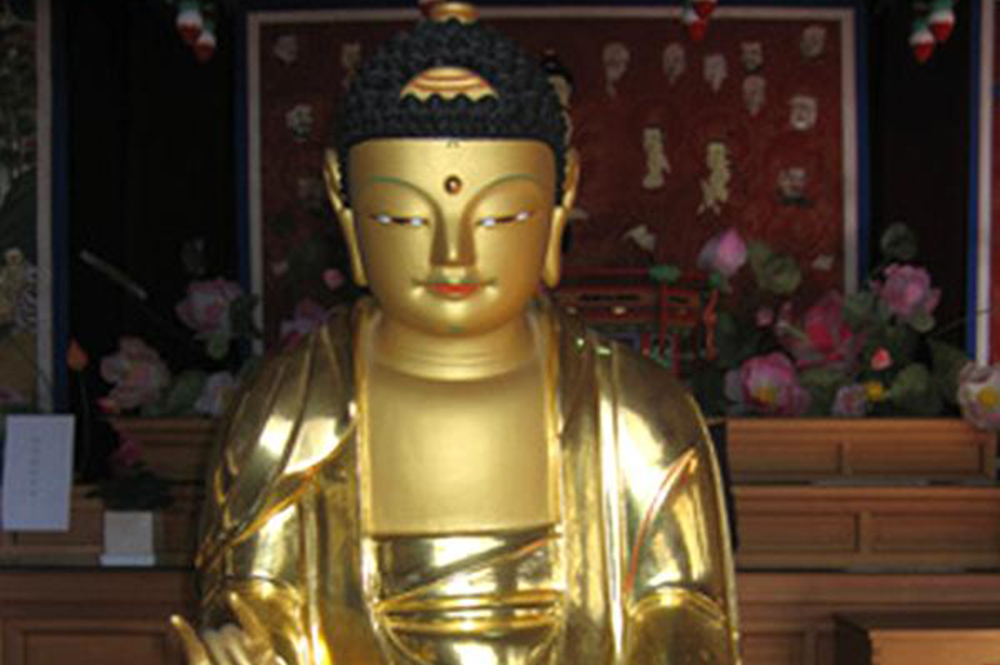Wooden SeatedStatue of Buddha in Beopinsa,Hamyang

Overview
- Location: Beopinsa (Temple), Geumcheon-ri, Anui -myeon, Hamyang-gun, Gyeongsangnam-do
- Selection No.: National Treasure No. 1691
- Era: Joseon Dynasty
Description
The wooden seated statue of Buddha enshrined in the main building of the temple, Beopinsa, is the work of Yeonggyu and Joneung completed in 1657. Currently, the other Buddha statues sculpted by Yeonggyu is not found. However, Joneung is known to participate in Beop Yeong's works of the wooden seated statue of Buddha of Bul-myeong Sa in Ok Gu, Jeollabuk-do in 1640. And, in 1655, Joneung was in charge of the wooden seated statue of Buddha of Bongseosa in Jeonju, Jeollabuk-do (Jeollabuk-do Tangible Cultural Property No. 156).
The Wooden Seated Statue of Buddha of Beopinsa has the oval shaped face and wide and smooth shoulder lines. The highest of the crossed legs in seating position is low, but wide, completing the good overall proportion to provide stability to viewers. The hands make the typical Buddha look authentic. The left hand standing vertically and the right hand positioned horizontally with the back of the hand showing upward while both hands are making rings meeting the thumb and the middle finger.
The back of the right hand is up, while the hand is in position. The statue's forehead is a little narrow. Both of the eyes are half opened with them, the eyes are partially lifted, which gives somewhat of a sharp image of the statue. The eye brows are crescent moon shaped. And, the nose is sharp. The lips are long and narrow with lifted ends expressing a mild smile on the face. White hair is in between the brows. On the neck, the trails of three realizations are expressed.
The dress of Buddha is very well expressed to be the characteristic of the statue. From the center of the legs, the dress drapes are in waves of an unsymmetrical fan shape with differences between left and right parts on the knees. The narrow left sleeve comes down to the inner side of the left leg, yet not adhered to the body. Since the high level of perfection of the wooden seated statue of Buddha of Beop, the Sa was evaluated to have enough value to be subjected and preserved for the studies; the statue was selected to be a National Culture Property Monument.

